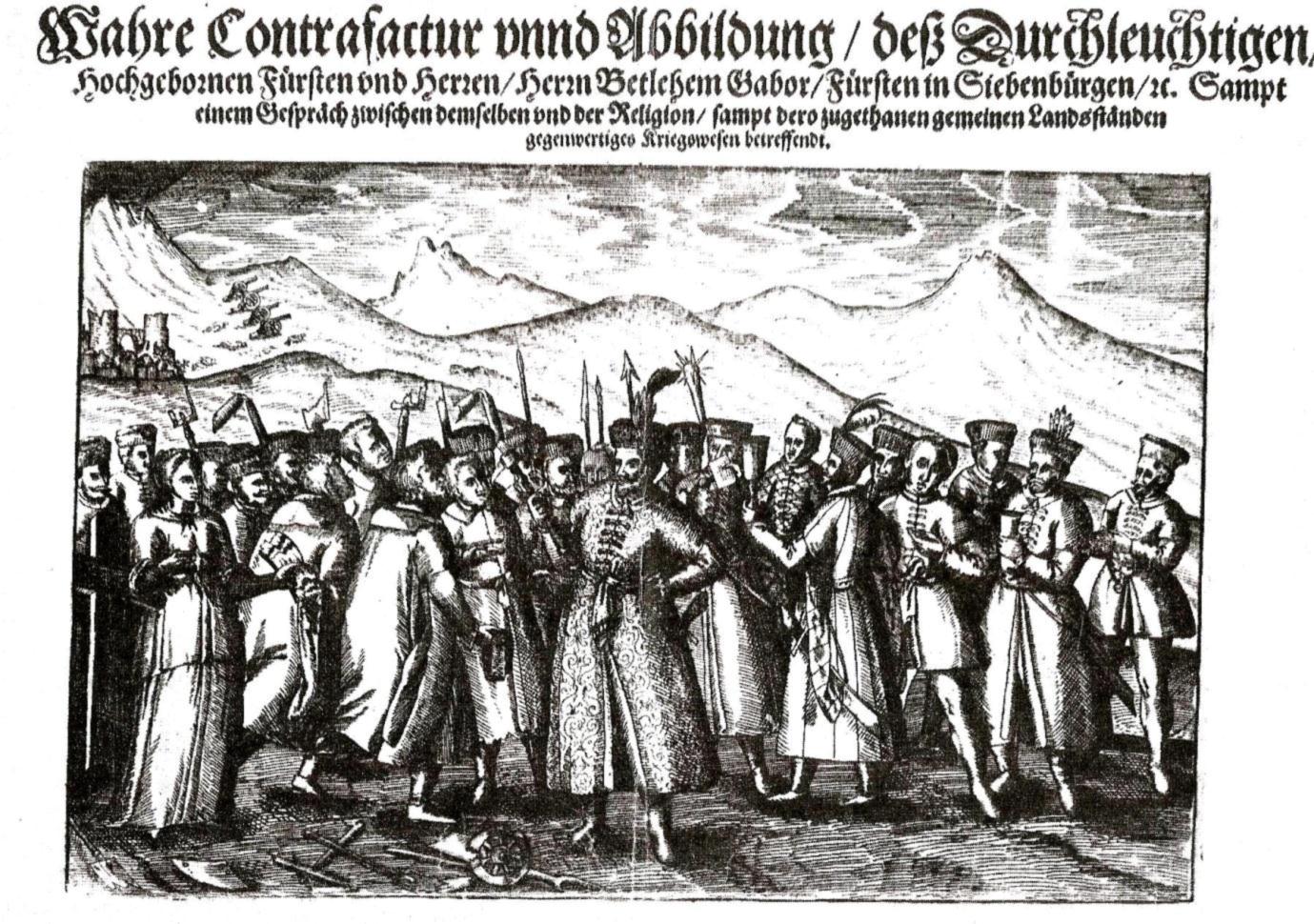Shop Amazon - Create an Amazon Baby Registry

Shop Amazon - Create an Amazon Baby Registry
Bethlen Gabor
and Hungarian peasant soldiers in the broadsheet
Contrafactur
(1620).

Wahre Contrafactur vnnd Abbildung / deß Durchleuchtigen
Hochgebornen Fursten vnd Herren / Herrn Betlehem Gabor / Fursten in Siebenburgen / u. Sampt
einem Gesprach zwischen demselben vnd der Religion / sampt dero zugethanen gemeinen Landsstanden
gegenwertiges Kriegswesen betreffendt.
True representation and depiction of his highness1, the high-born prince and lord, Sir Bethlehem Gabor, Prince in Transylvania, together with a conversation between the latter and the religion2 - including the common estates of the country3 devoted to it - regarding the current war affairs.
1 literally Durchleuchtig means Enlightened or Light-imbued. It was used as an address for high aristocrats in German.
2 "the religion" probably refers to Protestantism
3 Landstände = Estates of the Country, an administrative structure specific to the German and German-influenced lands in central and eastern Europe. Basically they are representatives of the important local entities such as cities, towns, gentry, patricians, monasteries, etc. The common estates would then have been just the non-noble, non-clerical part of this.
Translation by Iskar
The broadsheet Contrafactur published in 1620, plays on the religious sensibilities of the German Protestant audience in order to persuade them to support Bethlen Gabor’s campaign.
In its description of violations committed by Catholic Habsburg authority in Hungary, it is closely related to the Protestant pamphlets Regni Hungariae Occupatio (1619) and Gründlicher vnd wahrhafftiger Bericht auß Prag (1619).
Contrafactur reflects the need in 1620 to underline the religious motivations behind Bethlen Gabor’s aggressive anti-Habsburg campaign.
As is well-known, Bethlen Gabor had appeared suddenly on the European stage in August of 1619,
after which date he mounted a successful campaign to capture Habsburg-administered Royal Hungary.
Source: pp. 84-86 Foreign Heroes and Catholic Villains: Radical Protestant Propaganda of the Thirty Years’ War (1618-1648) by Darren Paul Foster
See also Toma Erdödy giving thanks for victory, with a vision of Christ crucified, 1620
Other illustrations of Hungarian Costume & Soldiers
17th Century Illustrations of Costume & Soldiers


